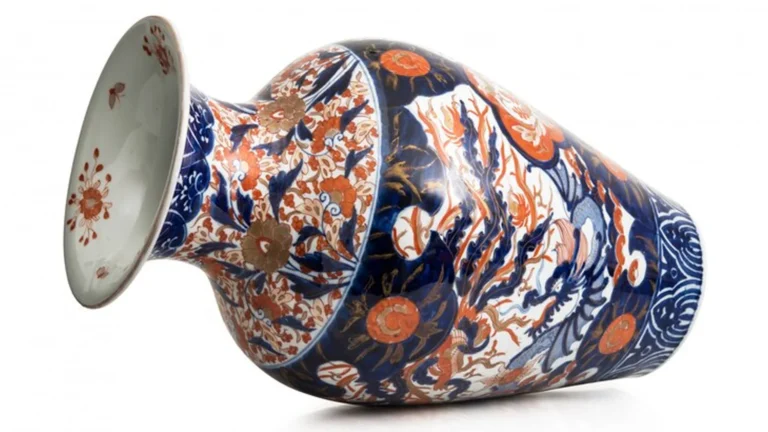Imari porcelain, with its vibrant colors and intricate designs, represents a pinnacle of Japanese ceramic artistry. This exquisite pottery has a rich history that dates back to the early 17th century and continues to captivate collectors and enthusiasts worldwide. In this article, we will explore the origins, characteristics, historical significance, and contemporary relevance of Imari porcelain’s while also answering some common questions about this remarkable art form.
TRENDING
Minnie Weisz: Celebrated Artist Shaping Contemporary Art
The Origins Of Imari Porcelain
Imari porcelain’s also known as Arita ware, originated in the town of Arita in Saga Prefecture, Japan. The story begins in the early 17th century when local potters, inspired by the imported blue-and-white ceramics from China, began to experiment with their unique style. By the 1650s, the production of porcelain in Arita had become well-established, leading to the creation of what we now recognize as Imari porcelain.
The name “Imari” refers to the port where these ceramics were shipped to the West. The combination of rich cobalt blue, vibrant reds, and gold accents became synonymous with Imari’s striking aesthetic, appealing to both Japanese tastes and foreign markets.
Distinctive Features Of Imari Porcelain
Colors and Patterns
Imari porcelain is characterized by its brilliant color palette, primarily featuring deep blue, fiery red, and shimmering gold. The designs often depict intricate motifs inspired by nature, including flowers, birds, and mythical creatures. The use of overglaze decoration, a technique that involves painting designs on top of the glaze, allows for the vivid colors that Imari is known for.
Types of Imari Porcelain
There are two main types of Imari porcelain: Ko-Imari and Shin-Imari.
- Ko-Imari: Refers to the earlier pieces produced during the Edo period (1603-1868). These pieces often showcase more traditional designs and techniques.
- Shin-Imari: Developed later, these pieces exhibit a broader range of colors and more elaborate patterns, reflecting the evolving tastes of collectors.
The Historical Journey Of Imari Porcelain
Early Development
The early years of Imari porcelain’s production were marked by a blend of Japanese and Chinese influences. As Japanese artisans honed their craft, they developed distinctive styles that set their work apart. The discovery of kaolin clay in Arita was pivotal, enabling the production of high-quality porcelain that rivaled imports from China.
Global Influence
Imari porcelain’s quickly gained popularity in Europe, especially in France and England, during the 18th century. The exotic designs and luxurious appearance made it highly sought after among the aristocracy. Imari wares were often used in grand dining settings, and their influence can still be seen in contemporary ceramics.
Collecting Imari Porcelain
How to Identify Authentic Imari Porcelain
When collecting Imari porcelain, it’s essential to know how to distinguish authentic pieces from reproductions. Key features to look for include:
- Markings: Many authentic Imari pieces bear a blue underglaze mark, often featuring a stylized symbol or the name of the artist.
- Quality of Craftsmanship: Genuine Imari porcelain’s is typically finely crafted with intricate details. Look for consistency in the pattern and a smooth, even glaze.
- Age: Older pieces may show signs of wear or subtle imperfections, which can add to their value.
Caring for Your Imari Pieces
Proper care is crucial for preserving the beauty of Imari porcelain. Here are some tips:
- Cleaning: Use a soft, damp cloth to gently wipe the surface. Avoid abrasive materials that could scratch the glaze.
- Display: Keep pieces away from direct sunlight to prevent fading. Consider using display cases to protect them from dust and potential damage.
Contemporary Relevance Of Imari Porcelain
Today, Imari porcelain’s continues to be revered not only for its beauty but also for its historical significance. Modern artisans often draw inspiration from traditional designs, creating new pieces that resonate with contemporary tastes. Collectors and enthusiasts appreciate Imari for its craftsmanship and the stories behind each piece, ensuring that this timeless elegance remains relevant in the modern world.
Conclusion
Imari porcelain stands as a testament to the timeless elegance of Japanese ceramics. Its rich history, distinctive features, and continued relevance make it a beloved art form for collectors and enthusiasts alike. Whether you’re an admirer of its beauty or a collector of fine ceramics, understanding Imari porcelain’s opens up a world of cultural appreciation and artistic exploration. As we celebrate its legacy, we can appreciate how these exquisite pieces continue to inspire and enchant across generations.
ALSO READ: Samsung H-Fi 5732B: The Ultimate High-Fidelity Audio Solution
FAQs
What is Imari porcelain?
Imari porcelain’s is a type of Japanese ceramics that originated in Arita, characterized by vibrant colors, intricate patterns, and the use of overglaze decoration. It became popular in the 17th century and is renowned for its artistic beauty.
How can I tell if my Imari porcelain is authentic?
Authentic Imari porcelain’s can be identified by its craftsmanship, markings, and signs of age. Look for blue underglaze marks, intricate details, and subtle imperfections that indicate a piece’s age.
What are the main colors used in Imari porcelain?
The main colors used in Imari porcelain’s are cobalt blue, vibrant red, and gold. These colors are often combined in intricate patterns that depict natural motifs and traditional designs.
Is Imari porcelain still produced today?
Yes, Imari porcelain’s is still produced today, with modern artisans creating pieces that blend traditional techniques with contemporary aesthetics. These new pieces are often inspired by historical designs.
How should I care for my Imari porcelain?
To care for your Imari porcelain, clean it gently with a soft, damp cloth, avoid abrasive materials, and display it away from direct sunlight. Proper care will help maintain its beauty and value over time.

